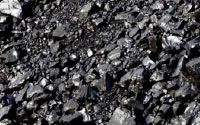Bitumen is an oil based substance. It is a semi-solid hydrocarbon product produced by removing the lighter fractions (such as liquid petroleum gas, petrol and diesel) from heavy crude oil during the refining process. As such, it is correctly known as refined bitumen. In North America, bitumen is commonly known as “asphalt cement” or “asphalt”. While elsewhere, “asphalt” is the term used for a mixture of small stones, sand, filler and bitumen, which is used as a road paving material. The asphalt mixture contains approximately 5% bitumen. At ambient temperatures bitumen is a stable, semi-solid substance.
Bitumen is black material which is consumed from 4000 years B.C. its previous Latin name was PIXTU-MEN and today Bitumen and Asphalt are used as its name. its main usage is in roads and streets asphalt and insulation. The first street in the world was covered with asphalt in Washington in 1876 and in Iran Felestin Street was the first in 1933.One of the types of bitumen which is used more is refined bitumen produced in refineries. Also a kind of tar is produced from coal. There are natural bitumen mines in nature which need to be refined. Bitumen is divided into two main groups in usage: paving grade and roofing grade.Chemically bitumen components are divided into two groups of Hydrocarbure , Asphaltine , and Maltin. There is 5-30% Asphaltin in bitumen which causes the hardness of the bitumen. Maltin is made of grease and resin. The heaviest derivative which is separated from crude oil in the vacuum distillation unit is the residue of the vacuum distillation which is briefly referred to as "vacuum bottom" or VB. This residue is the main feed for bitumen producing unit. In this unit,v.b is oxidized using air. Oxidation continues as long as the feed reaches standard properties of bitumen such as the penetration number and softening point (melting temperature). Since the temperature of bitumen is increased in oxidation process, output of reactor is passed through a cooler and then is sent to storage tanks. By regulating operational variables such as the temperature of reactor, residence time in the reactor, and the ratio of air to feed it will be possible to produce different grades of bitumen for various consumptions such as road and industrial types. Moreover adding some proper additives allows us to produce modified bitumen like Polymer Modified Bitumen (PMB) which is highly resistant in heavy traffic and bad climatic conditions. Another bitumen product is bitumen emulsion which is gradually substituting cutbacks for its environmental privileges as well as energy consumption savings.
Bitumen penetration grades available:
Gilsonite ( Natural Bitumen) This natural asphalt is similar to a hard petroleum asphalt and is often called a natural asphalt, asphaltite, uintaite, or asphaltum. Gilsonite is soluble in aromatic and aliphatic solvents, as well as petroleum asphalt. Due to its unique compatibility, gilsonite is frequently used to harden softer petroleum products. Gilsonite in mass is a shiny, black substance similar in appearance to the mineral obsidian. It is brittle and can be easily crushed into a dark brown powder.
This natural asphalt is similar to a hard petroleum asphalt and is often called a natural asphalt, asphaltite, uintaite, or asphaltum. Gilsonite is soluble in aromatic and aliphatic solvents, as well as petroleum asphalt. Due to its unique compatibility, gilsonite is frequently used to harden softer petroleum products. Gilsonite in mass is a shiny, black substance similar in appearance to the mineral obsidian. It is brittle and can be easily crushed into a dark brown powder.
Gilsonite is found below the earth's surface in vertical veins or seams that are generally between two and six feet in width, but can be as wide as 28 feet. The veins are nearly parallel to each other and are oriented in a northwest to southeast direction. They extend many miles in length and as deep as 1500 feet. The vein will show up on the surface as a thin outcropping and gradually widen as it goes deeper. Due to the narrow mining face, Gilsonite is mined today, much like it was 50 or 100 years ago. The primary difference is that modern miners use pneumatic chipping hammers and mechanical hoists.
 Application
Application
Gilsonite is used in drilling mud fluids and oil well cementing.
The addition of special-treated Gilsonite to water-based drilling fluids helps minimize hole washout by stabilizing troublesome shale’s.
The addition of Gilsonite to oil well cements reduces slurry weight without loss of compressive strength and acts as an effective bridging and plugging agent to seal fractures in week formations while cementing.